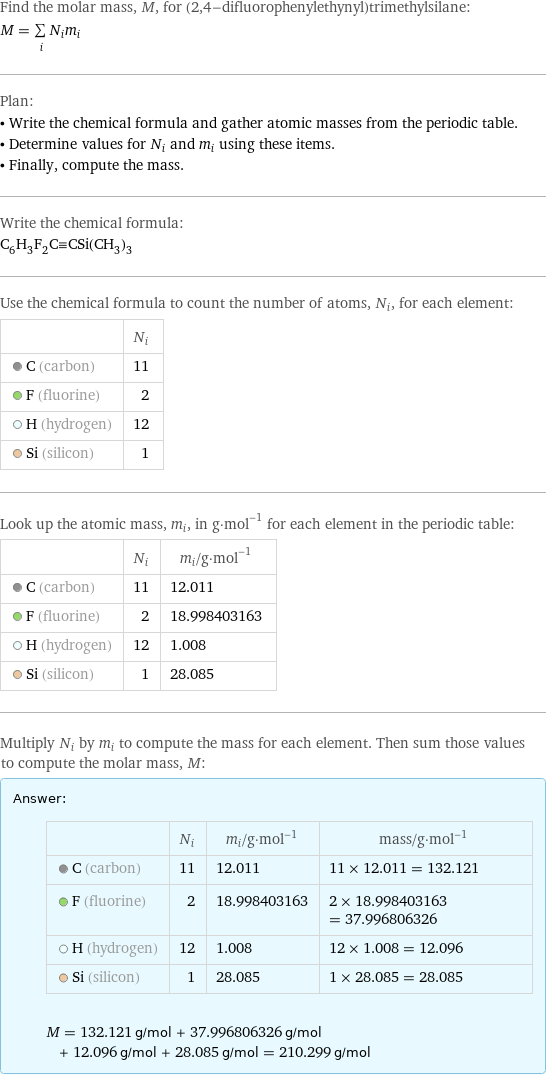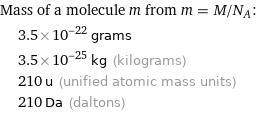Input interpretation

(2, 4-difluorophenylethynyl)trimethylsilane | molar mass
Result

Find the molar mass, M, for (2, 4-difluorophenylethynyl)trimethylsilane: M = sum _iN_im_i Plan: • Write the chemical formula and gather atomic masses from the periodic table. • Determine values for N_i and m_i using these items. • Finally, compute the mass. Write the chemical formula: C_6H_3F_2C congruent CSi(CH_3)_3 Use the chemical formula to count the number of atoms, N_i, for each element: | N_i C (carbon) | 11 F (fluorine) | 2 H (hydrogen) | 12 Si (silicon) | 1 Look up the atomic mass, m_i, in g·mol^(-1) for each element in the periodic table: | N_i | m_i/g·mol^(-1) C (carbon) | 11 | 12.011 F (fluorine) | 2 | 18.998403163 H (hydrogen) | 12 | 1.008 Si (silicon) | 1 | 28.085 Multiply N_i by m_i to compute the mass for each element. Then sum those values to compute the molar mass, M: Answer: | | | N_i | m_i/g·mol^(-1) | mass/g·mol^(-1) C (carbon) | 11 | 12.011 | 11 × 12.011 = 132.121 F (fluorine) | 2 | 18.998403163 | 2 × 18.998403163 = 37.996806326 H (hydrogen) | 12 | 1.008 | 12 × 1.008 = 12.096 Si (silicon) | 1 | 28.085 | 1 × 28.085 = 28.085 M = 132.121 g/mol + 37.996806326 g/mol + 12.096 g/mol + 28.085 g/mol = 210.299 g/mol
Unit conversion

0.2103 kg/mol (kilograms per mole)
Comparisons

≈ 0.29 × molar mass of fullerene ( ≈ 721 g/mol )

≈ 1.1 × molar mass of caffeine ( ≈ 194 g/mol )

≈ 3.6 × molar mass of sodium chloride ( ≈ 58 g/mol )
Corresponding quantities

Mass of a molecule m from m = M/N_A: | 3.5×10^-22 grams | 3.5×10^-25 kg (kilograms) | 210 u (unified atomic mass units) | 210 Da (daltons)

Relative molecular mass M_r from M_r = M_u/M: | 210